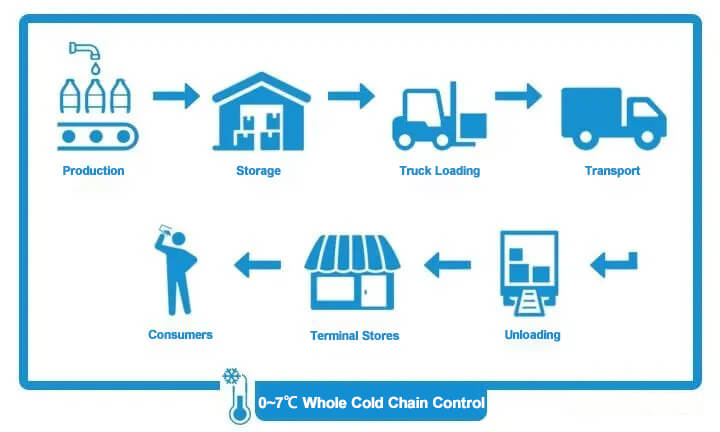vdrsoftwareonline.com – Search Engine Optimization, commonly known as SEO, is the practice of optimizing websites to increase their visibility on search engine results pages (SERPs) like Google, Bing, and Yahoo. This visibility is crucial for businesses, bloggers, and content creators who want to attract organic traffic to their sites. But how does SEO work? Below, we break down the fundamentals of SEO and explain the key strategies that help websites rank higher in search results.
1. Understanding Search Engines
Search engines use complex algorithms to analyze and rank billions of web pages based on relevance and quality. These algorithms assess numerous factors (called ranking factors) to determine which websites best answer a user’s query. SEO is all about aligning your website with these factors to increase your chances of appearing at the top of search results.
When a user enters a query, search engines go through three main steps:
- Crawling: They “crawl” or scan the internet using bots (spiders) to identify new and updated content on web pages.
- Indexing: They store and organize content found during the crawling process, building a vast database of content.
- Ranking: When a query is made, search engines retrieve the most relevant and high-quality content from the index and rank it accordingly on the results page.
2. Key Elements of SEO
There are several elements that make up SEO, each addressing different aspects of search engine algorithms. These elements include:
a. Keyword Research
Keyword research is the process of identifying popular words and phrases that users are likely to search for. These keywords form the basis of SEO because they represent the specific needs and questions of users. By strategically placing these keywords throughout your content, you can signal to search engines that your page is relevant to certain search terms. Common tools for keyword research include Google Keyword Planner, SEMrush, and Ahrefs.
b. On-Page SEO
On-page SEO refers to optimizing individual web pages to improve search engine rankings. Key aspects of on-page SEO include:
- Title Tags and Meta Descriptions: Title tags are HTML elements that specify the title of a webpage. Meta descriptions are short descriptions that summarize the content. Both should include target keywords and be optimized to attract clicks.
- Headings and Content Structure: Organizing content with headings (H1, H2, H3, etc.) not only helps readers but also signals to search engines that your content is structured and relevant.
- Content Quality: Content should be informative, engaging, and valuable to users. Google prioritizes content that answers a user’s question thoroughly and accurately.
- Internal Links: Linking to other relevant pages within your site helps search engines understand the structure of your site and can improve ranking for connected pages.
- Image Optimization: Using relevant, high-quality images with optimized alt text (descriptions) can improve visibility in both standard and image search results.
c. Technical SEO
Technical SEO focuses on the backend aspects of your website, including:
- Site Speed: Faster websites rank better and offer a better user experience. Tools like Google PageSpeed Insights can help improve site performance.
- Mobile-Friendliness: With most searches happening on mobile devices, search engines prioritize mobile-responsive sites.
- URL Structure: Clear, keyword-rich URLs make it easier for both users and search engines to understand a page’s content.
- SSL/HTTPS Security: Secure websites are prioritized in search rankings because they offer a safer browsing experience for users.
d. Off-Page SEO
Off-page SEO refers to external factors that influence your site’s ranking, particularly through building authority and credibility:
- Backlinks: Backlinks, or links from other websites to your site, are one of the strongest ranking signals. Quality backlinks (from authoritative, relevant sites) show search engines that your content is trustworthy.
- Social Signals: Engagement on social media can indirectly influence SEO by increasing visibility and attracting links to your content.
- Brand Mentions: When other websites mention your brand without linking, it still indicates relevance to search engines, especially if these mentions come from reputable sources.
e. User Experience (UX)
User experience is increasingly important to SEO. Metrics such as bounce rate, dwell time, and click-through rate can indirectly affect search engine rankings by signaling whether users find the content useful:
- Bounce Rate: The percentage of users who leave your site after viewing only one page. High bounce rates often indicate that users didn’t find the content useful.
- Dwell Time: The amount of time a user spends on a page before returning to the SERP. Longer dwell times can suggest quality content.
- Click-Through Rate (CTR): The percentage of people who click on your link in the SERP. Higher CTRs often correlate with higher rankings.
3. The Role of SEO Content Strategy
Content is the foundation of SEO. A good SEO content strategy involves creating quality content that addresses user needs and aligns with their search intent (the reason behind a user’s query). For instance, a user searching “how to bake a chocolate cake” is likely looking for a recipe, while someone searching “best chocolate cakes” may be looking to buy one.
Content should be valuable, regularly updated, and comprehensive enough to fully address the target query. This keeps users engaged and encourages sharing, which can lead to backlinks and social signals.
4. Tracking and Adjusting SEO Efforts
SEO is a long-term strategy, and it requires ongoing monitoring and adjustment. Here’s how you can track your progress:
- Analytics Tools: Google Analytics and Google Search Console offer insights into website traffic, keywords, and ranking positions. These tools allow you to monitor which pages perform well and identify areas for improvement.
- Competitor Analysis: Regularly analyzing competitor sites can reveal opportunities for improving your own SEO strategy.
- A/B Testing: Testing different page structures, keywords, and meta descriptions can help you determine what performs best and fine-tune your SEO tactics accordingly.
Conclusion
SEO is a multifaceted process that involves understanding search engine algorithms, optimizing on-page and off-page elements, and creating valuable content that resonates with users. Although it can take time to see results, the reward is a steady stream of organic traffic that boosts brand visibility and engagement. As search engines evolve, staying informed about the latest SEO practices and adapting to algorithm changes are essential for maintaining a competitive edge. With the right approach, SEO can be one of the most effective strategies to grow your online presence.





